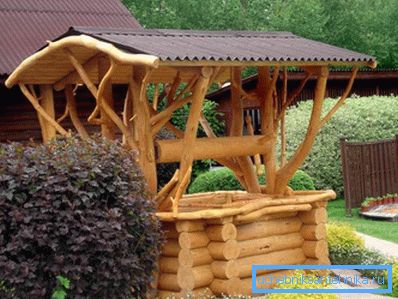Water supply from the well - the details of the organization
Water supply of a private house has long ceased to be a luxury. To be powered from the main line is not possible everywhere and as practice shows, it is not always reliable. If the aquifer in your area lies at a depth of up to 15 - 2 0m, then the water supply from the well + with your own hands will be the best solution.
At first glance, it sounds scary, but in reality almost every owner can do it. We'll figure out.

How attractive is the system?
- The water supply system from the well has both a number of indisputable advantages and some negative sides. First of all, the cost-effectiveness and durability of the structure largely depends on the initial quality of the arrangement.
- There are several options for finishing a log house, but not every one of them is available for installation by an amateur. So with the arrangement of a wooden house, in addition to a sufficiently high professionalism, you need to navigate the wood species. Otherwise, you risk getting a durable log house and water in the well with a pronounced taste.
- Circular masonry brick or wild stone requires knowledge and skill. For the amateur, the best option is to use concrete rings.
Below is a guide to the arrangement of the log in this way. If we talk about the merits of such a water supply, it is worth noting the main ones.
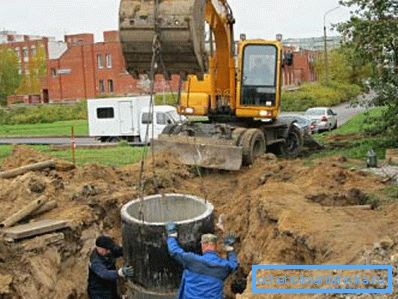
Benefits
- Although the work itself is not easy to call, the execution algorithm is quite simple and accessible to almost everyone. In addition, you will not need special permits for arranging a well on your plot, which means you will not get the pleasure of communicating with officials and bureaucrats.
- If we talk about the cost, the price of the well will be lower than the price of a well from a sandy layer to a depth of 50 m or an artesian well to a depth of 200 m.
- You will always have water. Even if for any reason, your automatic water supply system is temporarily shut off, you can always get water using the old-fashioned method using a bucket.
- But one of the most important advantages of the well is the possibility of independent arrangement. In this way, people have been extracting water for thousands of years and it is enough to have proven material on how to organize a well.
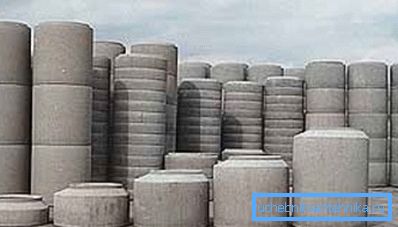
Minus
But not everything is so smooth, due to the close bedding of the water layer, the water in the well may contain a number of undesirable impurities and is sometimes suitable only for technical needs.. Although this disadvantage can be successfully dealt with using an additional filtering system.
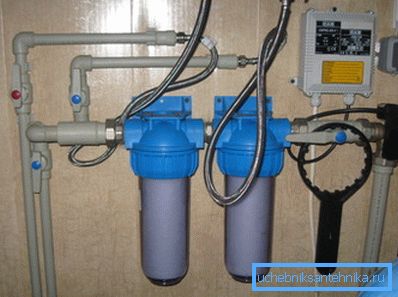
Getting Started
Digging the trunk and mounting a log house

Yes, dear reader, we will forgive us, but we will consider the easiest and most affordable way to trim a log house in the trunk, this is an installation based on concrete rings. Immediately, we note that it is better to purchase rings reinforced from a reputable manufacturer, since they will be operated in extreme conditions.
Important: before starting work, interview neighbors with wells, find out the depth of the aquifer and the nature of the soil. Also this information can be obtained from local geological exploration. If the area is on the floods, then it is best to give preference to the well, and, you can entrust its drilling to professionals.

The barrel under the concrete frame can be dig in 2 ways.
First way
The first method is somewhat simpler, but there is a danger of a subsequent shift of the rings due to ground movements.
Plus, the arrangement of external waterproofing will be quite problematic.
- In accordance with this method, you begin to dig the barrel 30-40 cm wider than the diameter of the ring. Rings, as a rule, have a height of about 1 m, dig out the trunk by 1 ring and place the first ring in it. For these purposes, there are perforated rings and the first ring can be exactly that.
- Next, install the second ring on top of it and fix it with at least 3 brackets or special clamps. Holes better to immediately seal the cement mortar.
Tip: to seal through holes and crevices, it is better to use cement based solutions. Bitumen or bitumen mastics are not durable; in a few years, microcracks form in them and ground water will leak out.
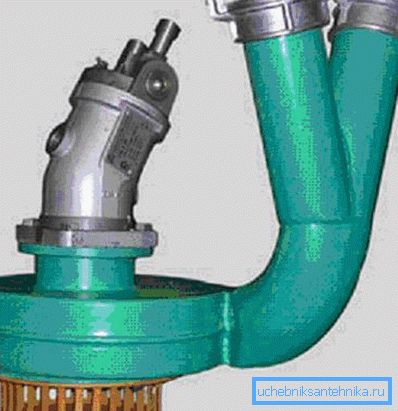
- Before mounting, the rings are waterproofed with bitumen from the outside. After installing the upper ring, begin to deepen the trunk. As a result of excavation, the concrete shirt will sit under its weight in the trunk. Further, the rings are increased as the deepening. In most regions, the average level of appearance of springs is 6–10 m.
- When you reach the aquifer, it should be entered at a depth of about 50 cm. Subsequently, this distance is filled with a natural filter. When an aquifer is discovered, water will flow more intensively as it deepens. It should be immediately pumped out, it is convenient to do this with a fire moto pump. A simple pump will clog and break.
- We remember that our upper belt is wider than a concrete shirt; this distance is used to arrange a clay castle that protects against the penetration of rainwater.
Second way
The second method of arrangement is harder, but safer and more durable.
- Its essence lies in the fact that the trunk is completely digging 30-40 cm wider than the concrete shirt and this is done before joining with the aquifer. After that, the first ring is lowered and undermined until full entry into the reservoir.
- Then the rings are lowered in turns, joined, sealed and waterproofed from the outside. As the trunk grows, the outer perimeter is filled and compacted with oily clay. As a result, we get a barrel that is well-insulated and protected by a clay castle over its entire height.

Installation of piping and pumping equipment
- Stationary water supply from a well, naturally is not possible without laying of the giving pipes. Currently, plastic pipes are usually used. They are quickly and easily soldered, plus they are flexible and durable enough. Metal will be more expensive, it is more problematic to mount it, plus it is prone to corrosion.
- The line is laid slightly below the freezing point with a slope from the house to the well. A height difference of 0.5 m is quite enough; it is needed to discharge water from the system if necessary.
- When installing the water supply system from the well, special attention should be paid to the transition of the pipe through the concrete jacket. In the process of work, it will vibrate slightly and break the hermetic seal.
- Therefore, we advise you to go through this problematic place with the help of a sgon (a pipe segment with a thread at the edges). The walls of the concrete jacket are crimped on both sides with flanges with sealing gaskets. The external and internal part of the highway is soldered or joined by a threaded connection.
- Another problematic place in the pipe layout, is the pipe sector from the entrance to the well to the water mirror. In winter, there is a chance of it freezing, so we advise you to make a separate insulation or use special pipes that have multilayer insulation, plus a heating wire inside.
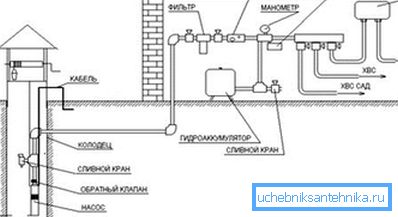
Important: you can fix the pipe in the well in different ways. If you plan to use a submersible pump, it is better to pre-pump out the water, to drive a metal rod into the bottom, which will support the pump with a pipe. If you are using a pumping station, it is enough to fix the pipe with 2 - 3 crutches along the entire length.
- The organization of water supply from a well is not possible without the installation of high-quality, stationary pumping equipment and distribution automation. Pumps for wells for water supply at home can be self-priming with an external ejector, the so-called pumping stations. And submersible, submersible pumps, mounted directly under water.
- Water from the well is more preferable to equip with a pumping station. Since all the technological equipment is mounted in the house, in an easily accessible place.
- Self-priming units are designed to lift water from a depth of up to 45 m. The power of pumping equipment is selected taking into account the fact that the constant pressure in the system should be around 1.5 atmospheres. Plus, the system should have a margin of safety with the expectation that at the time of maximum consumption, the power reserve should be around 30%.

- For a cottage in which 3–4 people live permanently, plus watering the backyard plot, 3–4 m is enough? at one o'clock.
- Submersible pumps, as a rule, are initially equipped with a filter nozzle. For self-priming systems, it is necessary to install a strainer at the end of the pipe, in the well, to prevent the ingress of contaminants into the system.
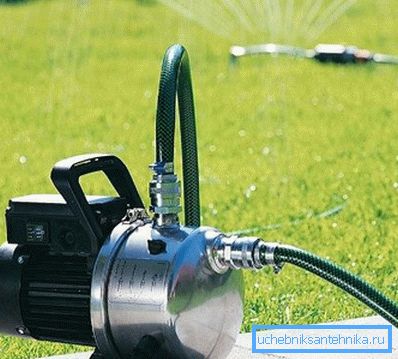
- The bottom of the filter of any type of pump should be no closer than half a meter from the bottom of the well. This is especially true for sandy or oozy bottom consisting of soft clay rocks.
- In such cases, a multi-layer filter is placed on the bottom. Rubble is laid at the very bottom, then gravel and river sand. For the well, standing on a false float, a perforated shield wrapped with geotextile was originally laid.
- All pumping equipment is preferable to place in the house, because the minimum temperature in the room should not be below +2? C. In most cases, all equipment is installed in the basement, but with a small distance from the well, it can be installed in the attic.
- In this case, when the power supply system is disconnected, the water in the accumulator will flow into the house by gravity and depending on the volume of the tank, you will be provided with water for some time.
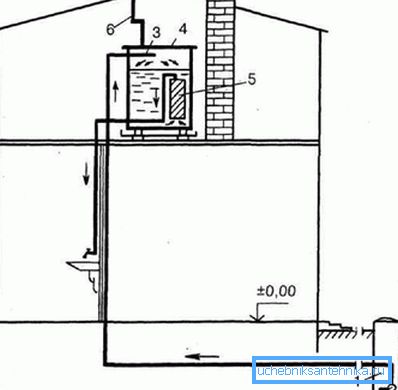
- After entering the house on the pipe filter is installed for coarse water treatment. Immediately after the filter, a check valve is installed, which prevents the accidental discharge of water from the water supply system of your private house back to the well.
- After the check valve, the pumping station is installed. If the water quality does not satisfy you, you can install a comprehensive system of fine filters behind the pumping station. After that, the system pressure switch equipped with a pressure gauge is connected.
Important: it is desirable to equip the system with an idling sensor, it will turn off the unit in the event that there is no water in the system. This is especially true in the summer, when a lot of water goes to watering and the level in the well drops sharply.
- After the pre-installation of the water supply system from the well is completed, you can start wiring around the house and only after the docking of all system components, the electrical equipment is connected. The power supply to the pumping station should be separate, equipped with a protective circuit breaker.
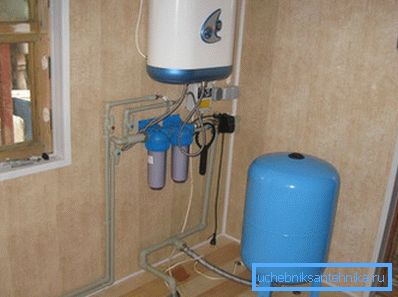
Conclusion
As you can see, the organization of water supply from a well, theoretically, is not very difficult. With a great desire and not too large material investments it is quite possible for an amateur to mount the system with their own hands.
On the video in this article you can observe the principles of installation of the system.
